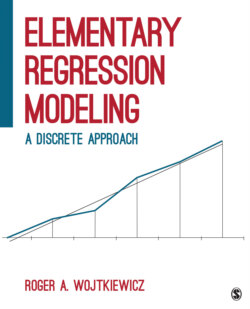Читать книгу Elementary Regression Modeling - Roger A. Wojtkiewicz - Страница 19
На сайте Литреса книга снята с продажи.
Key Concepts
Оглавлениеregression modeling: the use of one or more regression equations to examine a particular coefficient in greater depth.
control modeling: adding control variables to a regression equation to ensure that the effect of the independent variable of interest does not capture the correlated influences of the control variables.
modeling interactions: using interaction variables to examine whether the effect of one independent variable depends on the value of a second independent variable.
modeling linearity with splines: using spline variables that are created by breaking an interval variable into parts to consider whether the parts are linearly related to the dependent variable each in the same manner.
testing research hypotheses: estimating individual coefficients, estimating a series of regression equations as part of control modeling, modeling interactions, or using spline variables to model linearity to test research hypotheses.
discrete approach to regression: begins with the idea that the central question in regression analysis is about how social groups are different from one another and compares groups on a dependent variable.
1. For an introductory discussion to the classical regression approach, see Gordon (2012, Chap. 5), Kahane (2001, Chap. 2), and Wooldridge (2013, Chap. 2).
2. Agresti and Finlay (2009), Chapter 7, present a basic discussion of group comparison as a basic analytical approach in statistical analysis.
3. Demaris (2004), page 18, defines a discrete variable as “one with a countable number of values.”
4. The focus of this book is on regression modeling. An important concern when using regression is addressing the assumptions of the regression model. Discussion of regression assumptions does not fit into the focus of the present book. See Fox (2015) for an extensive discussion of issues related to regression assumptions.
